I would like to thank Signor Ermanno Cozza of Maserati's Consulenza Storica and Dr. George Lipperts for providing me with information on which this page is based. | |
 |
|
Unfortunately this experimental prototype 'High-Tec' 6-valves per cylinder engine announced on the 14th December 1985 never made it into production. |
6-cylinders, 36-valves, 4-ohc, twin turbos and loads of technological know-how!
The 'Hi-Tech' technology applied to the Maserati Sei Valvole offered: 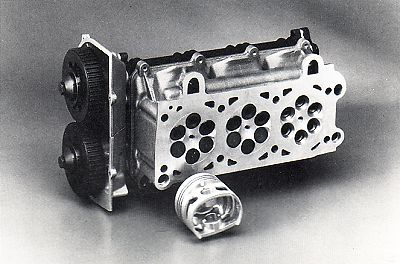 But above all the sheer pleasure of driving a car that combines the prestige of a glorious sporting tradition with avantgarde technology. 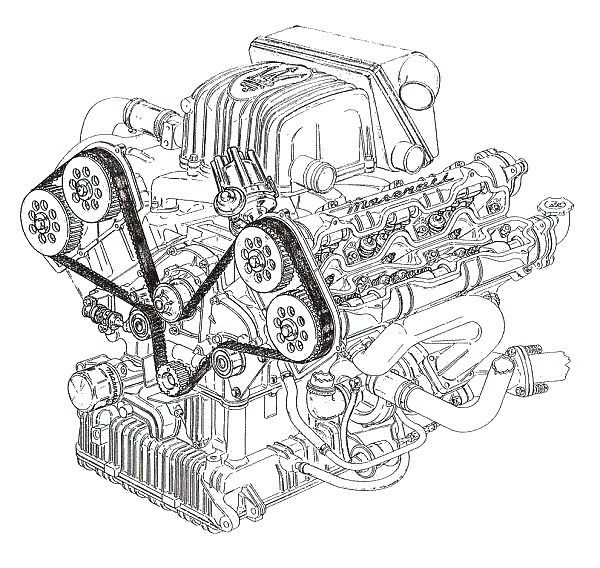 The 'High Tec' V6 - 36v - 4AC Experimental Engine |
Advertising literature at the time stated: Throughout the history of the internal combustion engine, the search for the maximum performance has followed a number of different routes. To increase engine performance, the air/petrol mixture entering the combustion chamber has to be transformed into mechanical energy. The air/petrol mixture is always a suspension made up of micro-drops of fuel and air. Experience has shown that if there are changes of direction in a moving column (as there are in the cylindrical window typical of engines with only one inlet valve), the proportions of air and fuel will tend to be uneven, and they will tend to separate. This lack of uniformity between the two phases leads to imperfect flame propagation at the combustion stage, reducing engine performance, wasting energy, and last, but not least, causing the emission of highly polluting non-combusted particles from the exhaust. Twin-valve engines are also subject to some problems, caused by the slow passage of gases in the inlet and exhaust phases which restrict filling and emptying respectively. 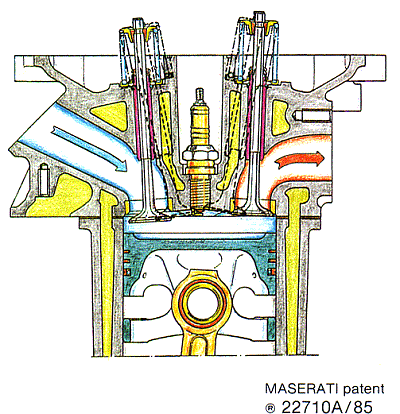 These and other considerations have, over the years, led to an increase in the number of valves in order to increase cylinder filling, thereby increasing the air circulation area and loss of pressure around the valves. If the number of valves is increased, the mixture flow will collide, ensuring that the air and petrol will always be homogeneous. 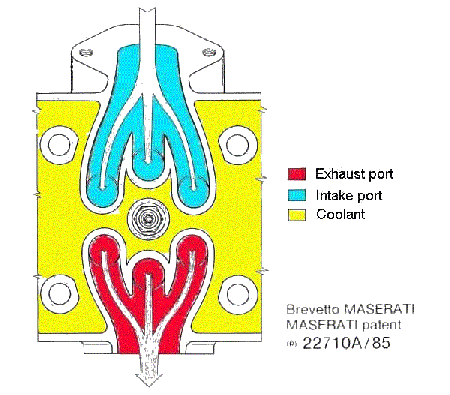 Next, it is essential to ensure that non-combusted gases are not trapped in the combustion chamber at the exhaust stage. In addition to increasing the proportion of pollutants emitted in the exhaust gases, these "intruders" also reduce the space available for the mixture, thus causing a further decline in engine performance. And the flow of gas around the exhaust valves aids cleansing of the combustion chamber. The advantages of an engine with more than two valves can, therefore, be summed up as less waste of energy (with obvious environmental and financial advantages) and higher thermal and volumetric efficiency. 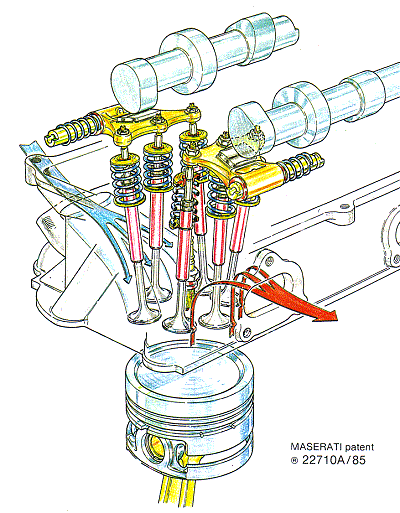 A fantastic six-valves per cylinder! After years of research, Maserati has now perfected a sports car engine with six valves per cylinder: three inlet and three exhaust valves. The designers avoided all possible complications and intricate parts which would inevitably make the engine more delicate, unacceptable on today's automobile market, and focused on simplicity. 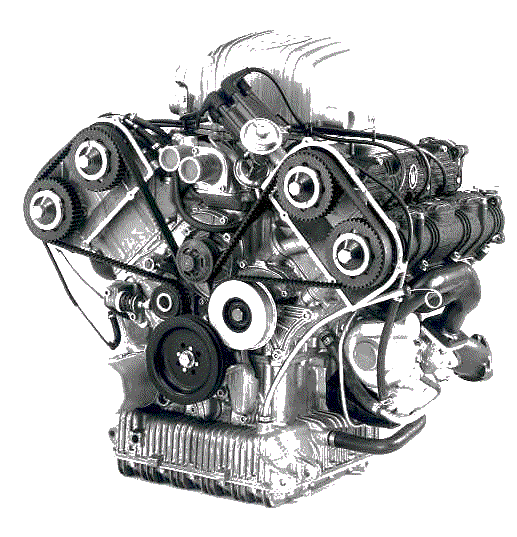 The fantastic 36-valve engine
The central valves (inlet and exhaust valves) are fitted at a different angle to the two outside valves. While the side valves are inclined at 11.25º and 10.50º respectively for the exhaust phase, the two central valves are inclined at 3º (inlet) and 2.5º (exhaust) from the head plane. This difference in angles produces an obvious 'swirl' effect inside the combustion chamber at the point where the mixture flows arriving from the various inlet valves cross. |
|
To enter Enrico's Maserati Pages CLICK HERE! Copyright: Maserati SpA - © 2002-2004. All rights reserved. |